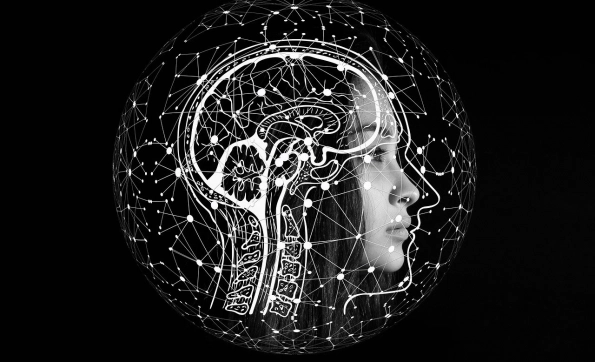Artificial intelligence (AI) has become a ubiquitous force across industries, promising to revolutionize workflows, independently execute complex tasks, and boost productivity to unprecedented levels. However, these advancements come with significant security challenges that necessitate a thoughtful approach to mitigate risks. The resurgence of AI adoption has brought to the forefront both its immense potential and its latent threats, creating a balanced need for innovation and caution.
AI Adoption and the Security Dilemmas
The Surge in AI Utilization
As organizations increasingly leverage AI for various applications, the efficiency gains are hard to overlook. Tasks once requiring human oversight are now delegated to algorithms that learn and adapt autonomously, giving businesses a competitive edge. The benefits span from operational efficiencies to creating new products and services, opening transformative avenues across sectors like healthcare, finance, and logistics. This surge marks a significant shift in how businesses operate, reflecting broader industry trends that prioritize digital transformation.
Simultaneously, as these AI systems become more integral to operations, the concerns around their security grow. The newfound capabilities of AI correspondingly expand the possible attack surfaces, making these systems susceptible to security breaches. This duality of advanced capabilities and growing risks underscores the need to understand and address AI security with both depth and foresight. As AI continues to proliferate across industries, establishing a secure framework becomes indispensable in safeguarding its advancements against malicious exploitation.
Recognizing Inherent Challenges
The rise in AI usage also means an increase in potential attack surfaces, inviting numerous challenges that traditional IT security measures may find inadequate. Key issues such as data poisoning, where malicious data corrupts the AI’s functionality, and adversarial attacks that manipulate inputs to deceive the AI, pose significant threats. Other problems, including hallucinations, where AI generates incorrect or implausible outputs, highlight how vulnerable these systems can be.
These challenges necessitate security measures that go beyond traditional methods tailored specifically to AI’s unique risks. Such concerns not only affect the direct outputs of AI systems but also reverberate through entire organizational processes relying on AI. Addressing these vulnerabilities involves innovating novel security solutions while ensuring that foundational security principles are not overlooked. This multi-dimensional risk landscape calls for a reimagined security paradigm, cognizant of AI’s complexities and equipped to mitigate its emerging threats effectively.
Expert Insights on AI Security
Highlighting AI’s Core Security Issues
During the Singapore International Cyber Week, experts delved into the vulnerabilities of AI systems, shedding light on critical issues that need immediate attention. Problems such as biases embedded within AI data, prone to perpetuating existing societal biases, were extensively discussed. Additionally, prompt injections, a method by which adversaries manipulate AI inputs to yield specific outputs, further exemplify the nuanced risks associated with AI.
The ability of AI to produce misleading information is another pressing concern, particularly in sensitive contexts like security and healthcare. These vulnerabilities underscore the necessity for a proactive and informed approach to AI security, tailored to preemptively address these specific issues. By understanding these core security problems, organizations can better devise strategies to protect AI systems from both known and emerging threats. The consensus from the panel emphasized the importance of collaborative efforts in navigating this intricate security landscape.
The Importance of Vigilance
Evan Miyazono, CEO of Atlas Computing, emphasized the importance of vigilance when working with AI models, particularly those based on transformer models. These models, while representing significant technological advancements, are built on existing data and may unknowingly propagate certain risks. Miyazono stressed the critical need to monitor these models continuously, as they could craft highly convincing yet deceptive communications, thereby posing a substantial threat.
Miyazono’s insights highlighted that the real concern lies in how these models can be manipulated to influence those with access to sensitive materials or secrets. The call for vigilance reflects a broader industry imperative to scrutinize AI outputs rigorously and to ensure that systems can reliably distinguish between genuine and manipulated data. By fostering a culture of continuous monitoring and assessment, experts advocate for more resilient AI systems capable of withstanding malicious exploitation.
The Multifaceted Security Landscape
Data Security: Protecting the Foundation
Chris Hockings, IBM Security Asia-Pacific CTO, outlined three primary areas of concern: data security, model security, and usage security, emphasizing the foundational role of data security. Data serves as the bedrock upon which AI models are trained, and any compromise in this data can lead to erroneous AI decisions. Thus, safeguarding data from breaches and ensuring its integrity throughout the AI life cycle is paramount.
Hockings highlighted that robust data protection strategies are essential to prevent adversarial attacks that seek to undermine the AI’s effectiveness. This includes implementing stringent access controls, encryption, and anomaly detection systems to mitigate unauthorized data manipulations. By securing data at its core, organizations can significantly reduce the risks posed by compromised or malicious datasets, thus ensuring the reliability and accuracy of their AI applications.
Model Security: Guarding the AI’s Integrity
Model security is equally critical since AI algorithms must maintain integrity to be reliable and trustworthy. Hockings drew attention to the vulnerabilities that exist within AI models, which adversaries could exploit to generate inaccurate or harmful outputs. Securing these models involves not only protecting them from direct attacks but also ensuring their resilience to subtle manipulations.
This includes developing comprehensive defense mechanisms against adversarial attacks aimed at exposing and exploiting model weaknesses. Techniques such as adversarial training, model verification, and regular stress testing can enhance the AI’s robustness. Protecting model integrity is not just about preventing immediate threats but also about building a resilient infrastructure capable of adapting to evolving attack methodologies. A holistic approach to model security helps organizations maintain confidence in their AI systems’ outputs, ensuring they remain reliable tools for decision-making.
The Call for Global Collaboration
Establishing International Cyber Norms
Léonard Rolland, head of international cyber policy at the French Ministry of Foreign Affairs, stressed the need for international cooperation in securing AI. He advocated for the establishment of shared global standards, arguing that only through such norms can a stable cyberspace be ensured. Rolland highlighted the role of international summits as pivotal platforms for these dialogues, facilitating the development of universally accepted security practices.
The call for international cyber norms aims to create a cohesive framework within which nations can address AI security comprehensively. This collaborative approach seeks to harmonize disparate security policies, fostering a unified stance against emerging threats. By establishing consistent, globally recognized standards, the international community can better safeguard AI systems and ensure their secure deployment. Rolland’s insights reflect a growing recognition that AI security transcends national borders, requiring cooperative efforts to manage its complexities effectively.
Voluntary Codes and Proportional Responses
Rod Latham from the UK’s Department for Science, Innovation, and Technology contributed to the discussion by introducing the UK’s voluntary code of practice for AI security. Latham urged for proportional and responsive measures to combat AI risks, emphasizing that such responses must be rooted in a global framework to achieve uniformity and effectiveness. This code of practice aims to provide guidelines for AI deployment, encouraging organizations to adopt best practices voluntarily.
Latham’s advocacy for proportional responses underscores the importance of flexible yet comprehensive measures tailored to the dynamic nature of AI threats. By promoting voluntary adherence to established codes, the UK aims to foster a proactive security culture. This approach not only helps mitigate immediate risks but also builds a resilient security infrastructure capable of adapting to future challenges. The emphasis on a global framework reflects an understanding that AI security is a shared responsibility, necessitating concerted efforts across borders to achieve lasting solutions.
Organizational Responsibility and Adaptation
Beyond the CISO: A Broader Responsibility
Both Chris Hockings and Rod Latham pointed out that AI security should not fall solely on Chief Information Security Officers (CISOs). Instead, this responsibility must be distributed across various departments within an organization. Chief Data Officers, for example, play a crucial role in overseeing data management practices that directly impact AI security. A comprehensive approach involves integrating diverse organizational roles to ensure thorough oversight and mitigation of AI risks.
This broader responsibility framework emphasizes the importance of collaboration among different sectors within an organization. By leveraging the expertise and insights from various departments, businesses can develop more nuanced and effective security strategies. This confluence of perspectives helps address the multidimensional nature of AI risks, ensuring that security measures are both comprehensive and adaptable. Such an approach not only strengthens internal policies but also fosters a culture of collective accountability.
Swift Organizational Adaptation
Hockings also called for rapid modernization of data security programs to keep pace with the evolving landscape of AI threats. Enhanced capabilities in digital identity management emerged as a critical aspect of this adaptation. Distinguishing between authentic and counterfeit entities is vital in maintaining the integrity of AI systems, and robust identity verification methods play a key role in this process.
This call for swift organizational adaptation highlights the need for businesses to continually refine their security practices. By staying abreast of the latest developments and integrating cutting-edge technologies, organizations can better protect their AI systems from emerging threats. This proactive stance ensures that security measures remain relevant and effective, mitigating risks before they can cause significant harm. A dynamic approach to security, rooted in continuous improvement, is essential in navigating the complex and rapidly changing AI environment.
Innovative Approaches to AI Security
Multi-Layered Security: The Swiss Cheese Model
Evan Miyazono advocated for a multi-layered security approach, likened to a “Swiss cheese model,” during his address at the conference. This model posits that multiple layers of security, each with its specific methods, can collectively manage potential breaches more effectively than a single solution. By implementing various layers of security, organizations can create a robust defense system that compensates for the weaknesses of any individual layer.
Miyazono also emphasized the importance of mechanistic interpretability, a method of analyzing specific capabilities or features within large language models to enhance their safety. By understanding how these models work at a granular level, organizations can better identify and address potential vulnerabilities. Additionally, specification-based AI, which involves ensuring AI systems can prove their safety characteristics, emerged as another promising strategy. Employing these innovative approaches can significantly bolster AI security, providing a more robust and reliable safeguard against emerging threats.
Learning from the Past
Rod Latham drew historical parallels during the discussion, comparing the current challenges in AI security to the technological advancements seen during the Second World War. He cited a correspondence from Bletchley Park, highlighting the need for adaptability amid rapid technological progress. Latham’s insights emphasized that securing AI and addressing its complexities demand a unified and innovative approach reminiscent of past technological responses.
This historical context serves as a reminder of the importance of flexibility and resilience in the face of evolving challenges. By drawing lessons from the past, organizations can better navigate the uncertainties of AI security, deploying strategies that are both innovative and adaptable. Latham’s perspective reinforces the notion that while AI presents unique risks, a concerted and forward-thinking approach can effectively mitigate these threats. Understanding the parallels between past and present technological challenges can guide the development of robust security measures that stand the test of time.
The Path Forward
A Cooperative Model for Tracking AI Risks
Léonard Rolland suggested a collaborative model, akin to the Intergovernmental Panel on Climate Change, for effectively tracking and managing AI risks. This proposal calls for the establishment of an authoritative body to relay scientific findings about AI risks to governments and stakeholders, guiding policy and strategy development. Such a model aims to create a centralized platform for disseminating critical information and fostering informed decision-making.
By integrating diverse perspectives and insights, this cooperative approach seeks to build a comprehensive understanding of AI risks. The model would function as a repository of knowledge, enabling stakeholders to stay informed about the latest developments and best practices. Rolland’s suggestion reflects a growing consensus on the need for structured and collaborative efforts to manage the complexities of AI security. Establishing such an authoritative body can play a pivotal role in ensuring a coordinated and effective response to emerging AI threats.
Modernizing Security Frameworks
Artificial intelligence (AI) has emerged as a transformative force across numerous industries, heralding a new era of efficiency and capability. By automating intricate tasks and optimizing workflows, AI promises to elevate productivity to heights previously unreachable. Despite these substantial benefits, the rise of AI brings with it formidable security issues that demand careful consideration. The rapid adoption of AI technologies has highlighted not only their extraordinary potential but also the underlying risks they pose, such as data breaches, algorithmic biases, and the potential misuse of AI systems. Organizations must balance the drive for innovation with vigilant risk management to harness AI’s capabilities safely.
The dual nature of AI, with its promise of great advancements and its inherent dangers, requires a strategic approach. Companies need to develop robust frameworks to secure their AI applications, ensuring they are not only powerful but also reliable and ethical. This involves regular updates, comprehensive training for employees, and stringent oversight to detect and mitigate potential threats. As AI continues to evolve, striking this balance will be crucial for reaping its benefits while protecting against its hazards.













